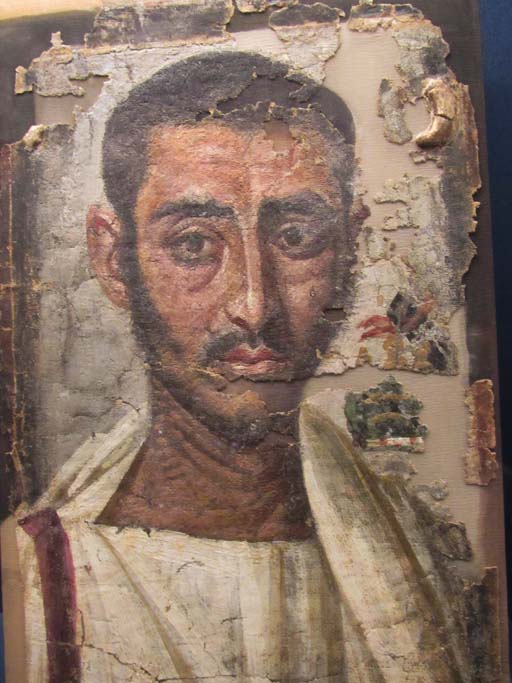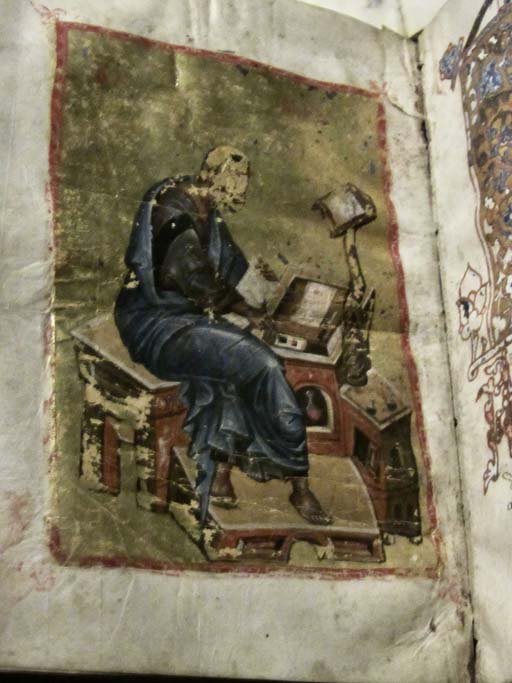Now here’s a Roman for you, the product of the merger of Roman portrait traditions with Greek painting and Egyptian funerary customs. Nothing seems to be known about the subject, save that (from the narrow red stripe on his tunic) he would seem to be a member of the Equestrian Order. This might have been an Egyptian funerary portrait, in which case the painting would be placed on or in the casket, or it might be a portrait of a living person. The point of origin for the pictures, if known, was not specified.
We found this gent at the Benakis Museum in Athens, which is filled with an enormous collection by two or more generations of the Benakis family. Much of the collection was assembled in the 19th and early 20th centuries, when it was possible for a private person to acquire these sorts of objects inexpensively— though it must be admitted the Benakis family was really rich. The museum is filled with artifacts from all stages of Greek history, from the Neolithic to the 19th century— tools, jewelry, weapons, statues, paintings, and entire rooms lifted from 18th Century mansions.
It was quite an adventure just getting there. We flagged down a cab outside our B&B and asked to be taken to the Benakis Museum. The elderly cab driver asked where it was. We pointed in a vaguely northeasterly direction. He drove a while and called a friend to ask for directions. The friend was not forthcoming. Kathy found a tourist map in her pocket and pointed to it. The map was in English, which the driver didn’t read, but in time he managed to decode it, and off we went.
By this I conclude that there is no kind of exam for Greek taxi drivers. Not to know a major point of interest was something of a blot on the brand.
Here’s another portrait, this from an illuminated manuscript, of St. Luke hard at work on his laptop.

